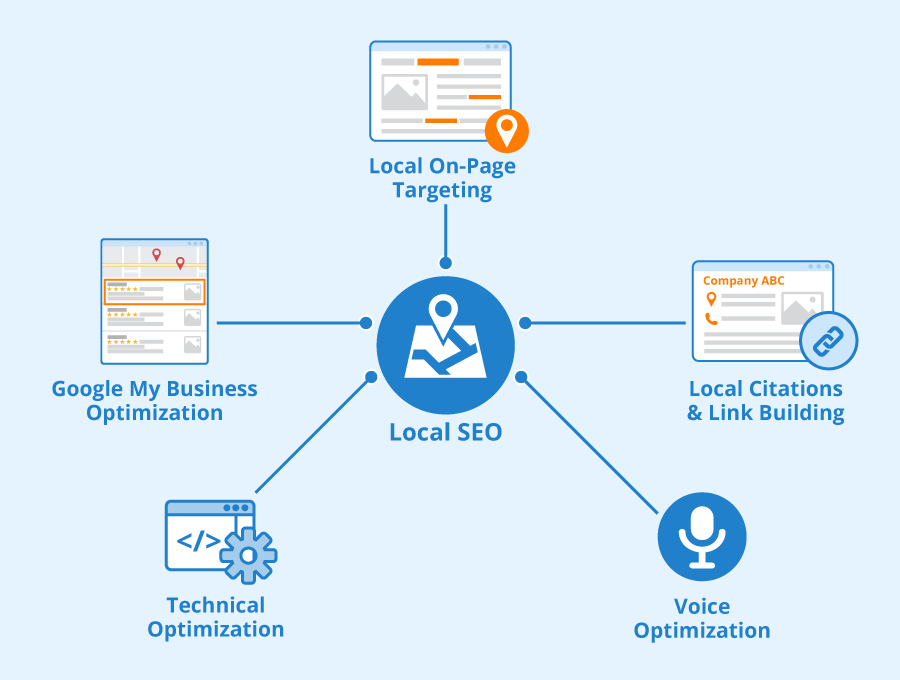Pick the leading SEO agency for enduring online success and rankings
Wiki Article
Exactly How Efficient Web Layout Can Boost Your SEO Technique and Improve User Experience
The intersection of efficient internet design and search engine optimization is a vital area for any kind of organization seeking to boost its online visibility. An user-friendly design not just boosts user experience yet additionally substantially influences SEO efficiency by reducing bounce rates and improving interaction metrics.Importance of Website Design for Search Engine Optimization
Effective internet design is regularly undervalued in its influence on seo (SEARCH ENGINE OPTIMIZATION) A well-structured website not only enhances customer experience however additionally plays a critical function in just how search engines rank web pages. Internet search engine like Google favor internet sites that show clear navigating, fast packing times, and mobile responsiveness. These variables add to decrease bounce rates and higher user involvement, which are vital metrics for search engine optimization success.Moreover, website design aspects such as tidy code, optimized images, and proper use HTML tags substantially affect a website's crawlability. Online search engine rely on organized data to recognize website web content and context, making it vital for web designers to implement finest methods. Additionally, the combination of SEO methods within the layout stage, such as consisting of keyword phrases in titles, meta summaries, and alt message for pictures, can enhance presence in search outcomes.
Ultimately, prioritizing reliable internet layout not only makes certain a smooth individual experience yet additionally develops a strong structure for search engine optimization initiatives, leading to boosted organic traffic and enhanced positions. Therefore, services have to recognize the inherent link between website design and search engine optimization to accomplish on the internet success.
Key Style Aspects for Individual Experience
Individual experience (UX) offers as a foundation for successful internet style, affecting how visitors interact with a website and perceive its value. To maximize UX, numerous crucial style components need to be focused on.First of all, user-friendly navigation is necessary; a well-structured food selection and clear pathways permit customers to find details rapidly, reducing frustration. Aesthetic hierarchy plays a crucial function, directing individuals' interest to crucial elements via size, positioning, and color. This helps with quicker decision-making and boosts total interaction.
Additionally, a constant style style boosts familiarity and depend on, as customers feel a lot more comfy navigating a website that aesthetically aligns throughout its web pages. Reliable usage of white room additionally can not be ignored; it prevents clutter, permitting important content to stick out and making the website more digestible.
Moreover, premium images and graphics are important, as they not just capture attention but also convey professionalism and reliability. Last but not least, rapid lots times are non-negotiable; delays can result in higher bounce prices and lessened user satisfaction. By concentrating on these vital style components, companies can dramatically enhance their user experience, fostering positive interactions that motivate return gos to and conversions.
Mobile Responsiveness and Search Engine Optimization Influence
As web layout increasingly prioritizes individual experience, the value of mobile responsiveness can not be overemphasized. With a significant section of internet traffic stemming from mobile tools, a receptive style makes sure that sites are accessible and functional across numerous display dimensions. This flexibility not just improves customer satisfaction yet also plays a critical role in search engine optimization (SEARCH ENGINE OPTIMIZATION)
Incorporating mobile responsiveness right into web layout also promotes improved filling times, which is a vital consider both user experience and SEO positions. Slow-loading web pages deter customers, bring about greater desertion prices and negatively affecting search visibility. Eventually, prioritizing mobile responsiveness not just enhances customer engagement but likewise enhances a web site's search engine optimization method, producing a much more affordable online visibility.
Website Framework and Navigation Ideal Practices
A well-organized website framework and instinctive navigating are necessary elements of successful website design. They not only boost individual experience but additionally play a crucial duty in seo (SEO) A clear hierarchy allows users and search engines to comprehend the partnerships between different pages, boosting the overall functionality of the website.Usage descriptive and keyword-rich URLs, as they provide context and boost search presence. This lowers bounce rates and maintains customers involved.

Determining the Success of Website Design
Measuring the success of website design includes evaluating various metrics that reflect individual involvement and overall site efficiency. Trick performance indications (KPIs) such as bounce price, ordinary session duration, and web pages per session offer insight into how customers communicate with the website. A high bounce rate may suggest that individuals are not locating the material appealing or pertinent, motivating a requirement for style or material revisions.Additionally, conversion rates are important for analyzing the performance of internet style. An increase in conversions, whether with type submissions, product acquisitions, or e-newsletter sign-ups, often correlates with intuitive style and user-centered capabilities. Tools like Google Analytics can provide in-depth reports on these metrics, making it possible for designers to identify trends and areas for renovation.
Eventually, a combination of quantitative information and qualitative responses establishes a thorough image of internet layout success, ensuring that it straightens with both Search engine optimization purposes and customer expectations. By continually gauging these elements, services can fine-tune their internet design techniques to maximize customer experience and drive meaningful interaction.
Final Thought

As web style significantly prioritizes user experience, the significance of mobile responsiveness can not be overemphasized.Incorporating mobile responsiveness into web style additionally promotes better loading times, which is a vital element in both individual experience and SEO positions. Eventually, a mix of quantitative data and qualitative feedback establishes a comprehensive picture of web style success, making sure that it straightens with both Search engine optimization goals and customer expectations. By regularly measuring these aspects, companies can fine-tune their web design strategies to maximize customer experience and drive significant involvement.
In final thought, efficient internet design substantially boosts SEO techniques and user experience.
Report this wiki page